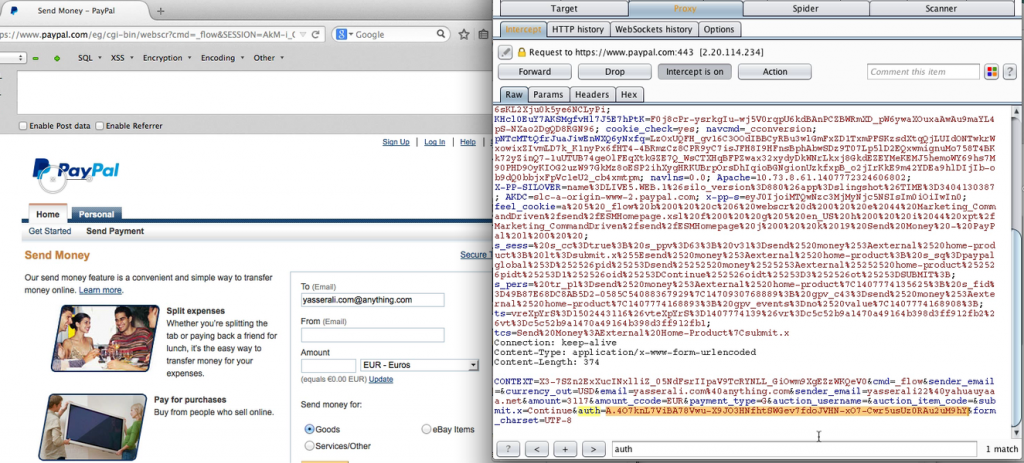Hacking PayPal Accounts with one click (Patched)
Today I am going to publicly disclose a critical vulnerability I have found during my research in PayPal, This vulnerability enabled me to completely bypass the CSRF Prevention System implemented by PayPal, The vulnerability is patched very fast and PayPal paid me the maximum bounty they give ;).
1- Reusable CSRF Token:
The CSRF token “that authenticate every single request made by the user” which can be also found in the request body of every request with the parameter name “Auth” get changed with every request made by user for security measures, but after a deep investigation I found out that the CSRF Auth is Reusable for that specific user email address or username, this means If an attacker found any of these CSRF Tokens, He can then make actions in the behalf of any logged in user.
Hmm, it seems interesting but still not exploitable, as there is no way for an attacker to get the “Auth” value from a victim session.
Hmm, it seems interesting but still not exploitable, as there is no way for an attacker to get the “Auth” value from a victim session.
2- Bypassing the CSRF Auth System:
The CSRF Auth verifies every single request of that user, So what If an attacker “not logged in” tries to make a “send money” request then PayPal will ask the attacker to provide his email and password, The attacker will provide the “Victim Email” and ANY password, Then he will capture the request, The request will contain a Valid CSRF Auth token Which is Reusable and Can authorise this specific user requests. Upon Further Investigation, We have found out that an Attacker can obtain the CSRF Auth which can be valid for ALL users, by intercepting the POST request from a page that provide an Auth Token before the Logging-in process, check this page for the magical CSRF Auth “https://www.paypal.com/eg/cgi-bin/webscr?cmd=_send-money”. At this point the attacker Can CSRF “almost” any request on behalf of this user.
Through examination of the password change process, I have found that an attacker can NOT Change the victim password without answering the Security Questions set by user, Also the user himself can NOT change the security questions without entering the password!
3- ByPassing the Security Questions Change:
After further investigation, I have noticed that the request of setting up the security questions “which is initiated by the user while signing up” is not password-protected, and it can be reused to reset the security questions up without providing the password, hence, Armed with the CSRF Auth, an attacker can CSRF this process too and change the victim’s Security questions.
At this point, An attacker can conduct a targeted CSRF attack against PayPal users and take a full control over their accounts. Hence, An attacker can CSRF all the requests including but not limited to:
1- Add/Remove/Confirm Email address
2-Add fully privileged users to business account
3- Change Security questions
4- Change Billing/Shipping Address
5- Change Payment methods
6- Change user settings(Notifications/Mobile settings) ………… and more.
To automate the whole process, I have coded a Python interactive server to demonstrate how an attacker can exploit this vulnerability in a real-life scenario attack.
2-Add fully privileged users to business account
3- Change Security questions
4- Change Billing/Shipping Address
5- Change Payment methods
6- Change user settings(Notifications/Mobile settings) ………… and more.
To automate the whole process, I have coded a Python interactive server to demonstrate how an attacker can exploit this vulnerability in a real-life scenario attack.
Here is the POC Video:




0 on: "Hacking PayPal Accounts with one click (Patched)"